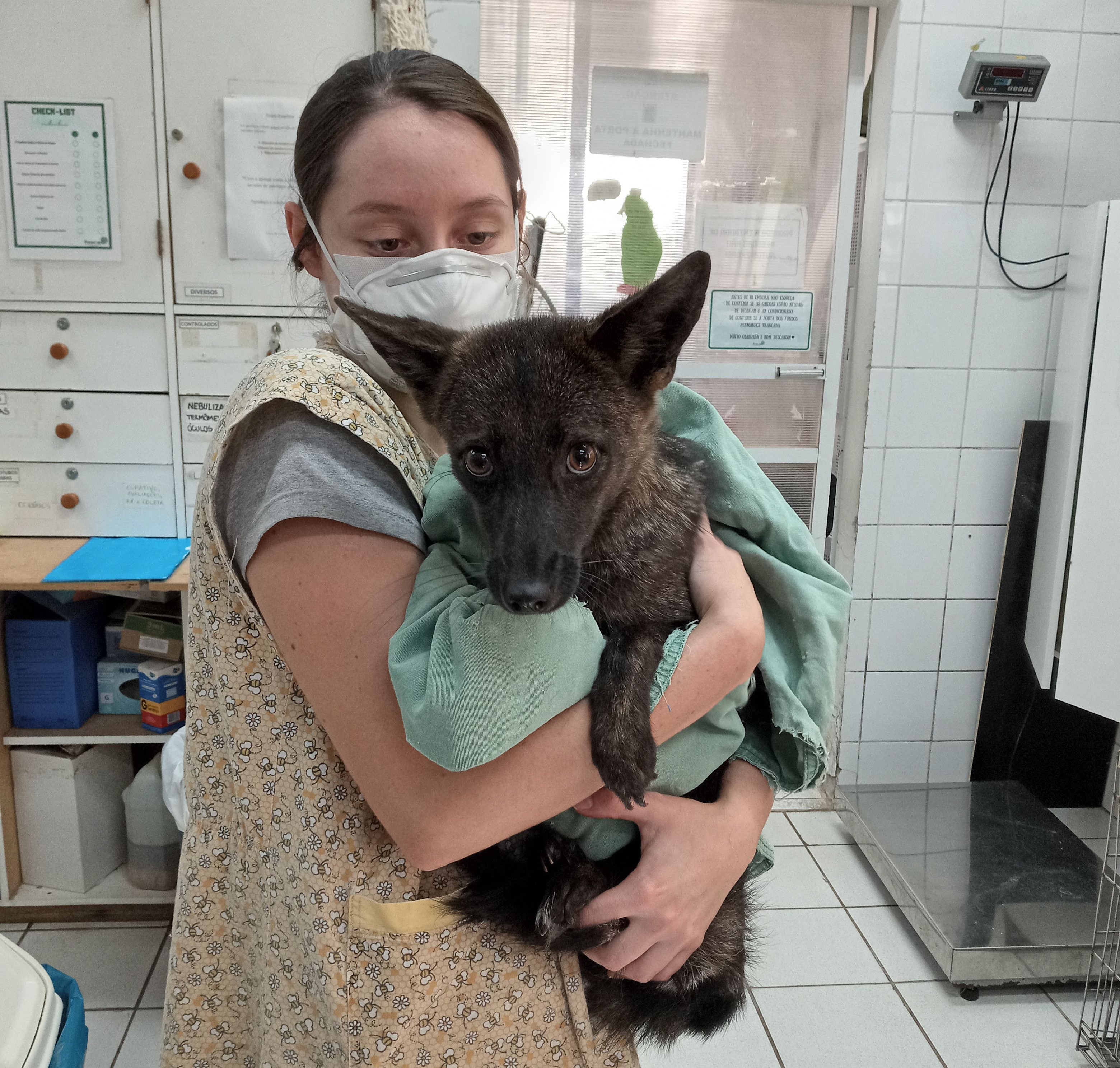As towns and cities grow and expand into previously rural areas, this brings into contact not only humans and wildlife but domestic pets and wildlife. While this can lead to issues such as the spread of disease, it can also have other unintended consequences. For the first time, researchers have documented a case of hybridization between a pampas fox and a domestic dog.
In 2021, a female individual was brought to the Center for Conservation and Rehabilitation of Wild Animals at the Veterinary Hospital of the Universidade Federal do Rio Grande do Sul, in Brazil, after being hit by a car. Given her unusual appearance and characteristics resembling both a dog and a wild canid, the team decided to investigate the individual’s genetics to learn more about her.
This is believed to be the first time this hybridization has occurred.
Image Courtesy of Flavia Ferrari
There are four species of wild canid that live in Rio Grande do Sul that could have contributed to the hybrid individual. The first, the bush dog, is known to have a range that does not include the area where the individual was found. That leaves three remaining species that live in a wider area surrounding Vacaria, where the individual was found: the maned wolf, the crab-eating fox, and the pampas fox.
The first was ruled out as it is the largest species of canid in South America and the shape and size were inconsistent with the individual’s appearance. The remaining two, the crab-eating fox and the pampas fox, bear similar overall appearance to the individual but both possess fur that is more gray, whereas the individual is dark black with a few white hairs.
The team analyzed the genetics of the hybridized individual and compared with the three possible canid species found in the area and domestic dogs, as well as breeding between the species themselves. They found that the individual had 76 chromosomes, while domestic dogs have 78, and pampas foxes have 74. Hybridization of the two would therefore produce an individual with 76 chromosomes.
After genetic analysis, the results revealed that a pampas fox and a domestic dog were the likely parents of the individual, which is therefore a hybrid of the two. The results show that the pampas fox was her mother while her father was a domestic dog of an unknown breed.
This is doubly interesting as pampas foxes (Lycalopex gymnocercus) belong to the genus Lycalopex, which shows that breeding is possible between members of the genus Lycalopex and Canis. Domestic dogs are Canis familiaris.
“She was an amazing animal, really a hybrid between a pampas fox and a dog,” Flávia Ferrari, a conservationist who worked with the animal during her recovery, told The Telegraph. “She had a shy and cautious personality, generally preferring to stay away from people. Over the time she was hospitalised for treatment, I believe she started to feel safer.”
The dog-fox hybrid recovered fully at the center and was then transferred to a conservation center called Mantenedouro São Braz in Santa Maria city, according to the Telegraph. She died this year of unknown causes.
The team suggest that there is more work to be done looking at the frequency of these hybridization events and the impact this is having on wild pampas fox populations.
The study is published in Animals.
Source Link: First Documented Case Of Hybridization Between A Dog And A Pampas Fox
